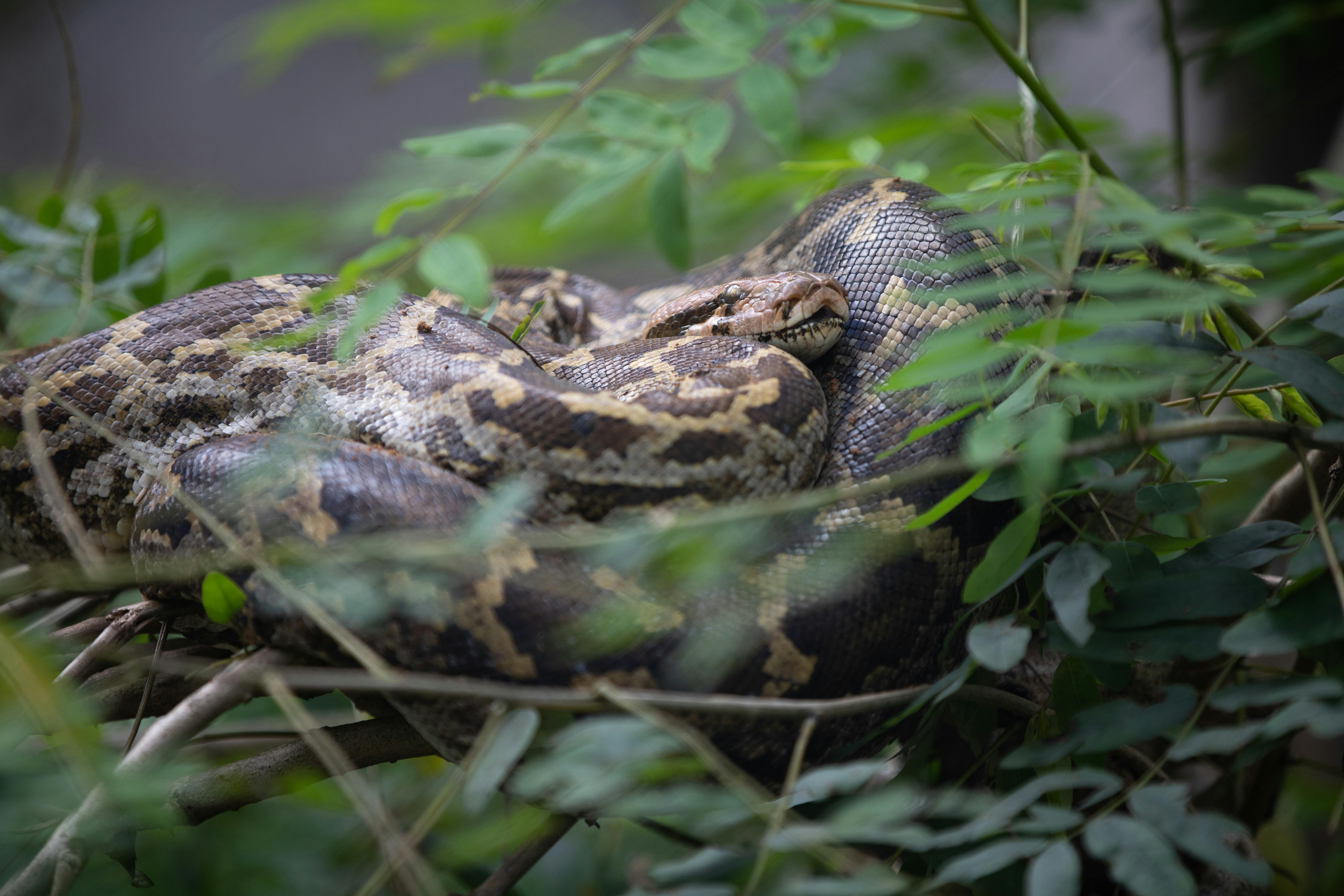If you’ve noticed your snake plant’s leaves folding or curling, you may be wondering why your plant is exhibiting this behavior. Snake plants are known to be quite hardy, so it’s likely that something specific is causing this issue. In this article, we’ll explore the possible reasons why your snake plant leaves may be folding and how to help your plant get back on track.There are a few potential reasons why your snake plant leaves are folding.
1. Overwatering – If your snake plant is receiving too much water, the leaves may start to fold and curl as a sign of root rot.
2. Underwatering – If you’re not providing your snake plant with enough water, the leaves may fold and droop as a sign of dehydration.
3. Temperature Changes – If your home’s temperature fluctuates widely between day and night, this can cause your snake plant’s leaves to fold.
4. Too Much Light – If your snake plant is getting too much direct sunlight, it can cause the leaves to become limp and fold in on themselves for protection from the intense light exposure.
5. Pests – Aphids, mealybugs, and other pests can cause your snake plant’s leaves to fold due to feeding damage or excessive sap-feeding activity.
Check the Soil of Your Snake Plant
It is important to check the soil of your snake plant regularly in order to keep it healthy and thriving. The soil should be kept moist, but not overly wet, as this can lead to root rot. The best way to check the soil is by feeling it with your finger. If it feels dry, then you should water your plant. If it feels wet, then you may want to wait a few days before watering again. Additionally, you should also check for signs of mold or fungus in the soil, which can indicate an unhealthy root system.
When checking the soil for mold or fungus, you should gently remove some of the top layer of soil and inspect it closely. If you see any signs of mold or fungus, then you should discard this top layer of soil and replace it with fresh potting mix. You should also be sure to sanitize any pots or containers that were used when planting your snake plant in order to prevent further spread of mold or fungus.
In addition to checking for moisture levels and signs of disease in the soil, you should also periodically fertilize your snake plant in order to provide essential nutrients for growth and health. Fertilizing once every two weeks with a general-purpose fertilizer will help keep your snake plant healthy and green throughout its life span. Be sure not to over-fertilize as this can burn the roots and cause damage to your plant.
Finally, regular pruning will help promote new growth on your snake plant while keeping its appearance neat and tidy. Pruning can be done by trimming off any yellowing leaves or overgrown stems with sharp scissors or a knife. Be sure not to cut too deeply into the stem as this can damage the root system and cause further harm to your snake plant.
Low Humidity and Its Impact on Snake Plants
Snake plants are a popular houseplant that is known for being a hardy and resilient species that can thrive in many indoor environments. However, one of the most important requirements for snake plants is humidity. Without adequate levels of humidity, the plant will suffer from wilting leaves and other negative effects. Low humidity levels can lead to a variety of issues that can be damaging to the health of your snake plant.
When there is not enough moisture in the air, it can lead to dry conditions for your snake plant. This lack of moisture will cause the leaves to wilt and curl, and may eventually cause them to turn yellow or brown. In extreme cases, the leaves may become brittle and start to crack or break off from the stem. This can be especially problematic if you’re growing your snake plant indoors as this environment is likely to have much lower humidity levels than outdoors.
In addition to affecting the leaves, low humidity levels can also impact the overall growth rate of the snake plant. The plant may grow more slowly than usual or stop growing entirely if not provided with adequate levels of humidity. This can be especially damaging if you’re trying to propagate your snake plant as this process will require higher levels of humidity in order for it to be successful.
Low humidity can also prevent your snake plant from flowering properly or at all. Without adequate moisture in the air, flowers will not form correctly on your plants which could affect their overall appearance and health. Additionally, some species may struggle more than others with low humidity so it’s important to research each individual species before attempting to grow them indoors.
Finally, low humidity levels can also cause an increase in pests such as mealybugs and spider mites which feed off of plants that are stressed due to dry conditions. These pests can quickly spread throughout your home if not dealt with promptly which could lead to further damage or even death of your plants.
In order to keep your snake plants healthy and thriving in low-humidity environments, you should make sure they are planted in well-draining soil and regularly misted with water during drier months. You should also keep an eye out for signs of stress such as wilting leaves or browning tips so you can act quickly if needed. With proper care and attention, you should be able to keep your snake plants healthy even in low-humidity conditions!

Proper Lighting for a Snake Plant
Snake plants are one of the most popular houseplants due to their easy care requirements and striking appearance. One of the most important things to consider when caring for a snake plant is proper lighting. Snake plants prefer bright, indirect light, but can tolerate low light levels. For best results, place your snake plant in a spot that receives several hours of bright, indirect light each day. Avoid direct sunlight, as it can be too harsh and cause the leaves to burn. If you don’t have a spot that has enough light for your snake plant, you can supplement with fluorescent or LED grow lights to provide additional light. Keep in mind that if you use artificial lights for your snake plant, you should keep them on for at least 8-10 hours each day. With the right amount of light, your snake plant will thrive!
Optimum Temperature for a Healthy Snake Plant
A healthy snake plant requires an optimum temperature to flourish. Generally, temperatures between 65-85 degrees Fahrenheit (18-30 degrees Celsius) are ideal for snake plants. While the plant can tolerate temperatures outside of this range, it is best to maintain the temperature within this range to ensure its health and luster. The plant should also be protected from extreme temperatures as it can suffer damage from too high or too low temperatures.
Snake plants are native to tropical regions and so do not need a lot of light. If you are growing your snake plant indoors, it is best to provide moderate indirect light. A south-facing window is ideal but make sure that the temperature does not drop below 65 degrees Fahrenheit (18 degrees Celsius). If the temperature drops too low, the leaves may start to yellow or discolor.
Snake plants can also withstand higher temperatures but do not thrive in extreme heat as it can cause dehydration and wilting of leaves. If you live in an area with very hot summers, you will need to provide additional ventilation or air conditioning for your snake plant. It is also important that you water your snake plant regularly during hot summers as dehydration can be fatal for the plant.
Snake plants are considered hardy plants and can tolerate a wide range of temperatures as long as they are not extreme. However, it is best to maintain the optimum range of 65-85 degrees Fahrenheit (18-30 degrees Celsius) for your snake plant in order to ensure its health and beauty for years to come.
Signs of Stress in a Snake Plant
Snake plants are considered to be one of the easiest houseplants to care for, so it may come as a surprise when you start noticing signs of stress in your plant. There are several signs that can indicate your snake plant is stressed, including yellowing leaves, brown spots on the leaves, wilting, and stunted growth. If you notice any of these signs in your snake plant, it’s important to take action right away.
Yellowing leaves can be a sign that your snake plant isn’t getting enough water or that the soil is too dry. Brown spots on the leaves can indicate sunburn due to too much direct sunlight or lack of humidity. Wilting is often caused by root rot due to overwatering or poor drainage. Stunted growth can be a sign of too much shade or not enough fertilizer.
If you notice any of these signs of stress in your snake plant, make sure to take the necessary steps to address the issue right away. Check the soil moisture and adjust accordingly. Make sure your snake plant is getting enough sunlight but not too much direct sunlight. Make sure there is adequate humidity around the plant and fertilize it regularly with an all-purpose fertilizer diluted to half strength every two weeks during the growing season from spring through fall. With proper care and attention, you should be able to keep your snake plant healthy and happy for many years to come!

Conclusion
Snake plant leaves folding is a sign of stress caused by certain environmental conditions. It is important to identify the cause of the problem and make necessary changes to ensure that the plant receives the right amount of light, water, and soil. With proper care and maintenance, snake plants can be kept healthy and beautiful for many years.
It is important to pay attention to your snake plant’s needs in order for it to thrive. Make sure that it gets enough light, water, and soil in order to keep its leaves from folding. If you notice any signs of distress, take steps immediately to rectify the situation and give your snake plant the best chance at staying healthy and vibrant.

